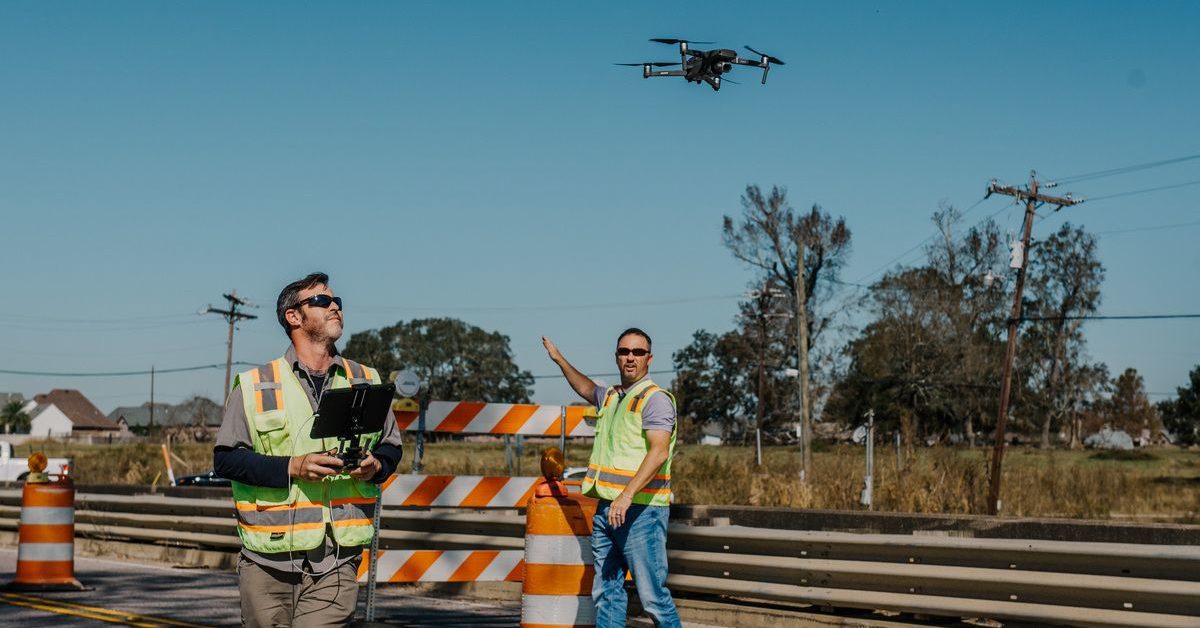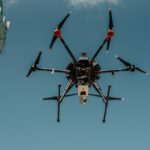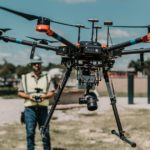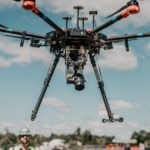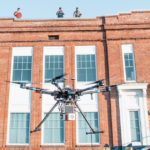Bridge inspections are critical in protecting the public from the dangers of aging and damaged infrastructure. Carrying out these inspections poses a number of challenges due to the height and tricky location of many bridges. Traditional inspection methods are time-consuming, costly, and dangerous.
Using drones to perform bridge safety inspections increases accuracy, improves worker safety, and results in significant time and cost savings. This article will examine the many benefits of using drones for bridge inspections, discussing the associated costs and how often they should be performed.
What Are the Benefits of Using a Drone for Bridge Inspections?
Utilizing drones for bridge inspections offers many benefits for both the inspectors and the public. Here are some of the greatest advantages of using drones.
Cost Savings
Bridge inspections are expensive. Traditionally, they require heavy equipment, teams of skilled workers, and inevitably include road and highway closures.
A 2019 study conducted by the American Association of State Highway and Transportation Officials (AASHTO) estimated a typical two-lane freeway bridge inspection to cost about $4,600. It found that a drone inspection of the same bridge would cost approximately $1,200.
Drone bridge inspections can be completed for about a quarter of the cost of manual inspections, mainly because they can be completed in about one hour as opposed to eight and the affected roads do not need to be closed down.
Drone inspections can be completed much faster because they don’t require heavy equipment. Manual inspections often make use of specialized trucks that need to be transported and set up several times throughout the inspection process. Workers then need to inspect every section of the bridge while suspended in the air. Frequent safety checks slow things down even more.
Drones can scale the height of a tall bridge in just a minute or two and data collection begins immediately. No heavy equipment needs to be transported or set up, and the data is stored for inspectors to review as needed.
Access
Access presents one of the main obstacles when conducting manual bridge inspections. Bridges need to be inspected from all angles. Getting clear and accurate views of the underside of a bridge, particularly, is very difficult during traditional inspections.
Manual inspections require technicians to work from trucks or ropes, which makes it very difficult to examine the bridge thoroughly. Drones are able to access a bridge from all angles. A remote pilot can easily fly a drone under a bridge and capture images using a top-mounted high-resolution camera.
Safety
Ensuring worker safety is a challenge in traditional bridge inspections. Depending on the height and location of the bridge, different equipment may be used to conduct a manual inspection.
One common method is to use lift trucks, which have a bucket or platform attached to a long arm. Workers positioned in the bucket or on the platform can be maneuvered both above and below the bridge. Another option is for workers to be suspended from ropes.
Both of these methods have their risks, especially when working above bodies of water or on busy roads. Anytime a worker is suspended high in the air there is a fall risk. There is also a risk of equipment falling and injuring people below.
When drones are used to complete bridge inspections, no one ever needs to leave the ground. The remote pilot and spotter remain on the ground below, while inspectors can review the gathered data safely from anywhere in the world.
High Definition Images
Drones equipped with high-definition cameras capture even the minute details that can alert inspectors to potential problems. Stress cracks, rust, and bearing problems require a close-up view that is much easier to obtain from drone cameras than from traditional visual inspections.
Problems such as strain and cracks can occur anywhere on the bridge, meaning that inspectors must closely examine every section of the bridge from every possible angle. This is very challenging to accomplish while suspended in the air by a truck or ropes, but simple to do with a drone camera, since drones can scan the entire structure in a fraction of the time.
Record Creation
During a manual bridge inspection, problem areas are identified by the worker carrying out the inspection. If the worker were to miss an issue, no one else would have the opportunity to find it. If damage is found, the inspector may take a picture to share with the team, but otherwise, there is no visual record of the inspection.
A great benefit of drone inspections is that all data collection is recorded. A team of inspectors then has the opportunity to view the entire inspection. If one person misses something, someone else may find it. Records can be reviewed as many times as necessary to ensure thoroughness and allow for as many people as necessary to have access to them.
The record of data collected hugely increases the accuracy of the bridge inspection. If a problem is found, it can be reviewed again, from a variety of angles, by many different experts, to determine the bridge’s safety and to plan repairs.
3D Modeling
Three-dimensional modeling is done by drones equipped with LiDAR sensors. LiDAR emits light and measures the time the light takes to travel to an object and then back to the sensor. Using this technology, inspectors can create incredibly detailed 3D maps and models.
LiDAR sensors are perfectly set up for drones as they function autonomously without the need of human intervention. Data is processed very quickly so inspectors can access the models right away.
3D modeling of bridges allows inspectors to check structures from a remote location. The subsequent models are highly detailed and accurate, allowing for thorough inspections that ensure bridge safety. 3D modeling can detect structural stress, surface erosion, and concrete loss, as well as many other early signs of damage.
Early detection allows for early repairs before the damage becomes significant. This is crucial in preventing deadly disasters such as bridge collapses.
Efficiency
Drone inspections are highly efficient, minimizing wasted labor, time, and costs. Depending on the size and location of a bridge, a complete inspection could easily take days or even weeks using traditional methods.
A drone bridge inspection is usually completed in hours or even minutes. The reduced number of manhours necessary translates into reduced labor costs, since fewer workers are needed for the project. There are also fewer traffic interruptions as roads can usually stay open during a drone inspection.
During regular inspections, lift trucks often have to be rented or purchased and then must be taken to the site. Other equipment, such as safety gear or ropes used for propelling, have to be transported as well. With a drone inspection, the drone is the only necessary piece of equipment, which results in fewer travel expenses and less wasted fuel.
How Often Should Bridges Be Inspected by Drone?
Bridges must be inspected periodically for damage. The more often inspections are conducted, the less chance there is of damage going unnoticed and becoming dangerous. In the United States, the Department of Transportation mandates that most highway bridges be inspected at least every two years.
If bridges are old, with visible damage, or are impacted by extreme weather or serious automobile accidents, inspections will need to take place more frequently. For traditional inspections that require highways to be closed and often take days or more, this is very difficult to implement.
Because drones are able to complete bridge inspections very quickly with minimal interruption to traffic, frequent inspections are much easier to manage. Increased frequency of bridge inspections greatly increases safety for the public.
How Much Does a Drone Bridge Inspection Cost?
The exact cost of a bridge inspection, whether performed manually or by drone, will depend on many factors including the size and location of the bridge. Due to reductions in time, labor, and equipment needed, drone inspections generally cost a fraction of what manual inspections cost.
As discussed above, a typical drone inspection of a two-lane freeway bridge would cost $1,200 compared to a manual inspection which would cost $4,600. The manual inspection price tag does not include the cost of truck and equipment rentals if needed, or user delay costs, which the AASHTO estimates at over $14,000 per bridge.
Drones are a very cost-effective way to perform bridge inspections. To get an exact quote of drone use for a bridge inspection, contact our Unmanned Aerial Services team at Fenstermaker. We’ll be able to help you determine which equipment is right for your inspection, provide you with a detailed estimate, and answer any questions you may have.
Final Thoughts
Bridge inspections are imperative to ensure public safety but they have traditionally been difficult and expensive to complete. With the need for frequent mandatory inspections, the logistics of closing highways and accessing the undersides of bridges can be a huge drain on time and finances.
Drones are completely changing the game by improving accuracy, reducing costs, and keeping workers safe from harm. Using a drone to complete your next inspection will save you substantial time and money while protecting your resources and improving outcomes.
